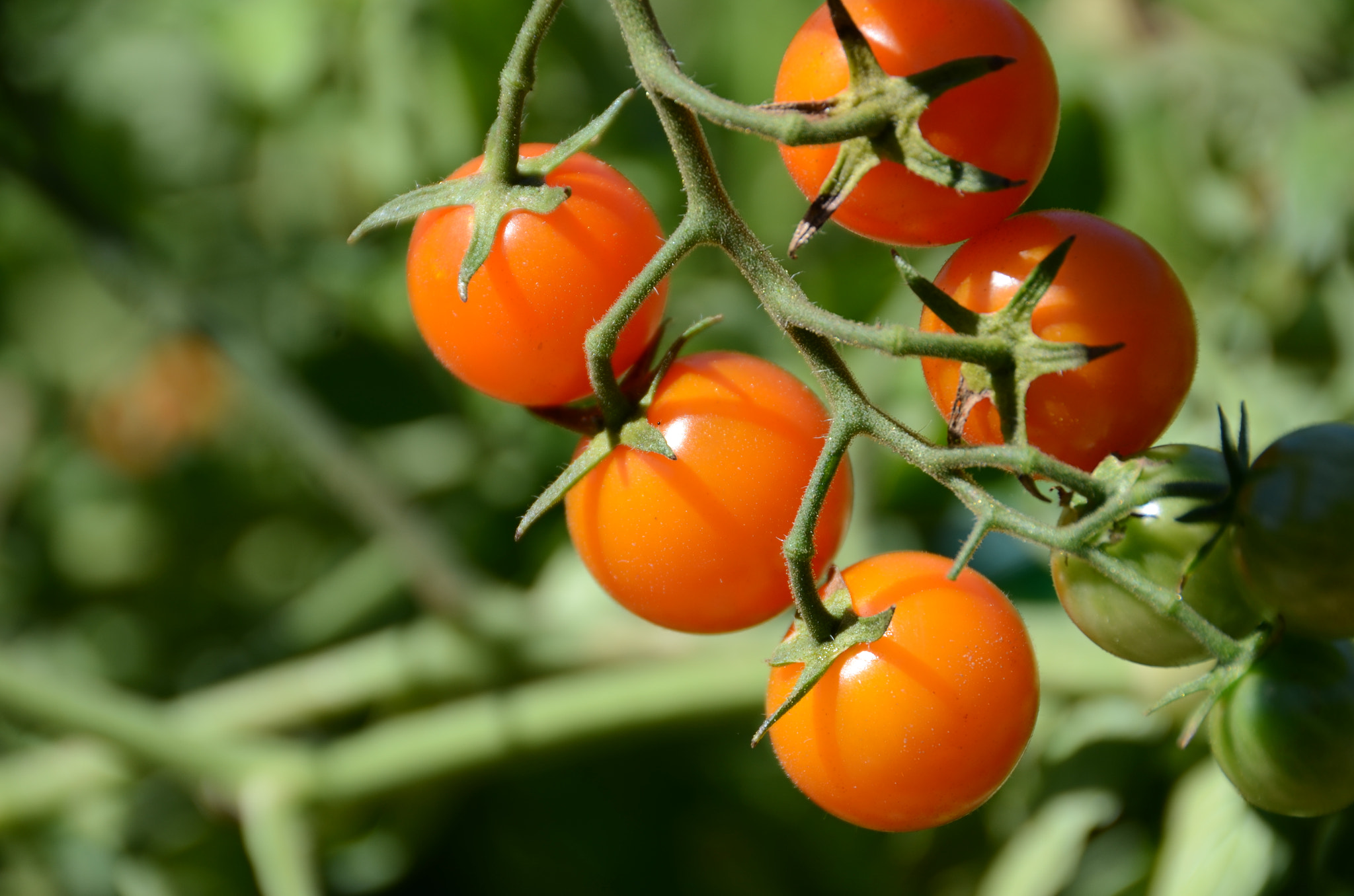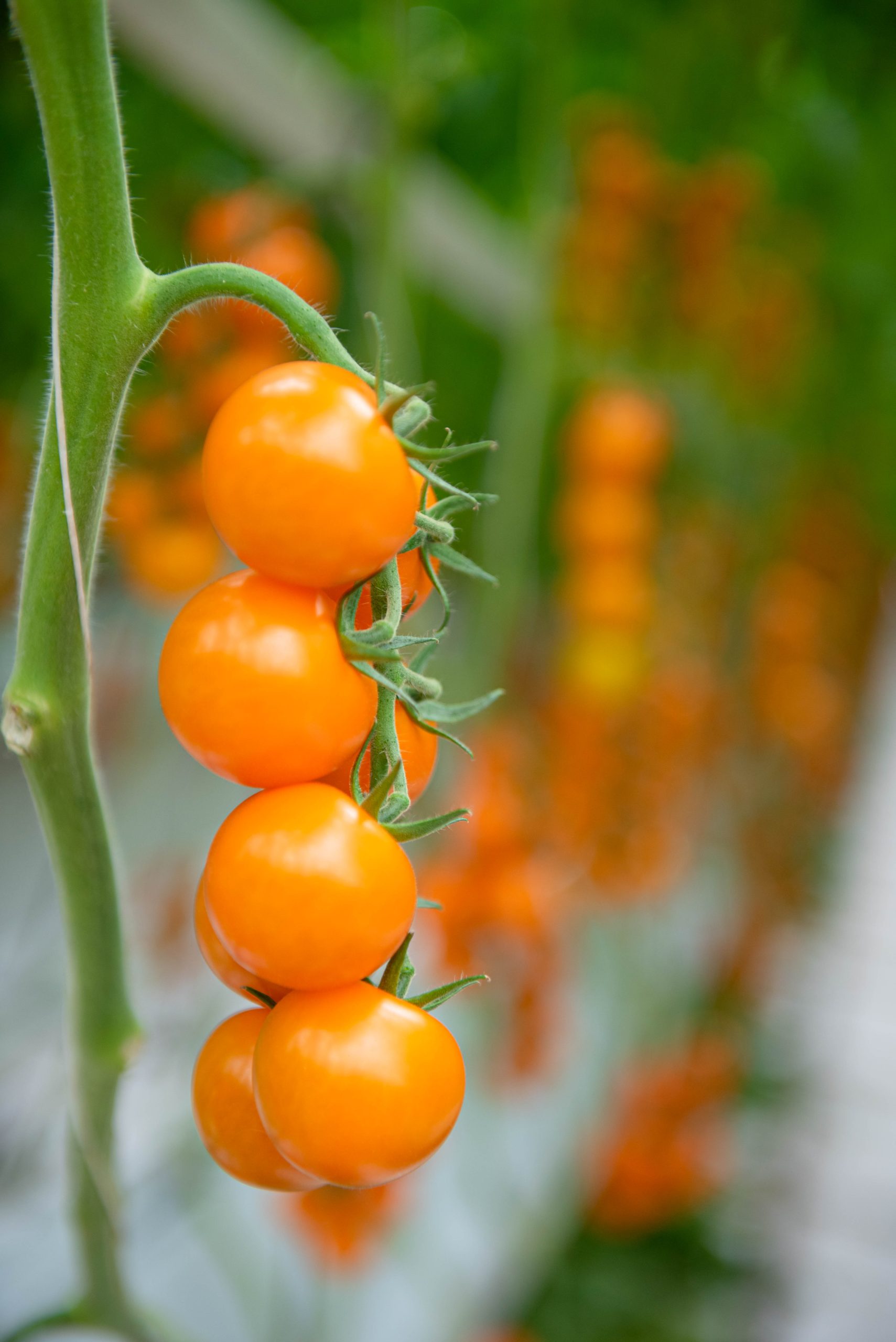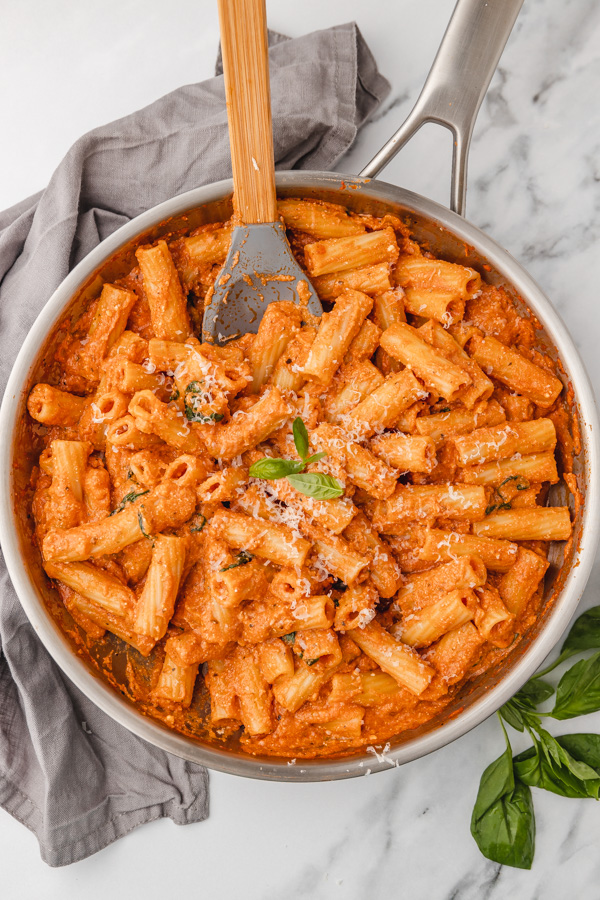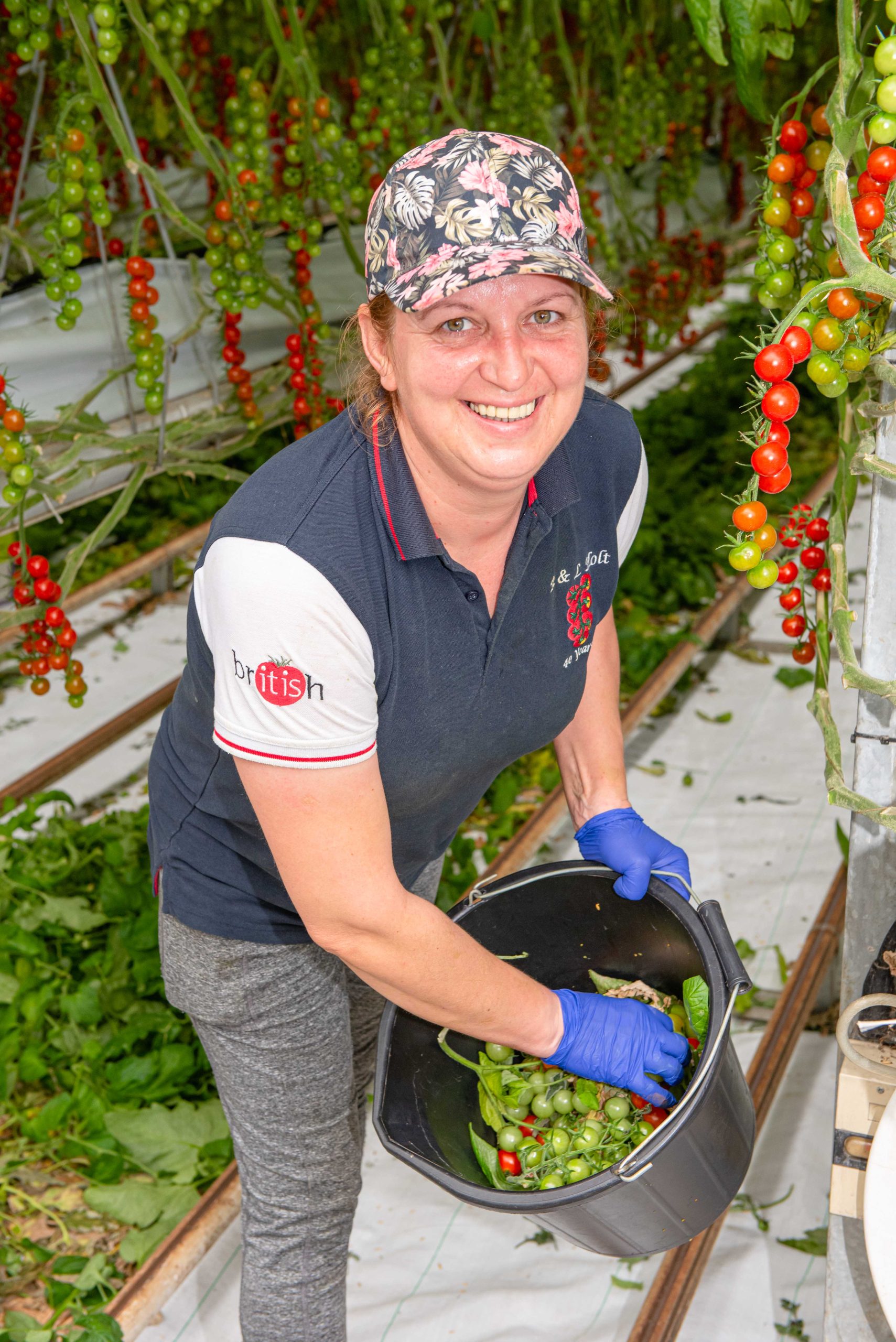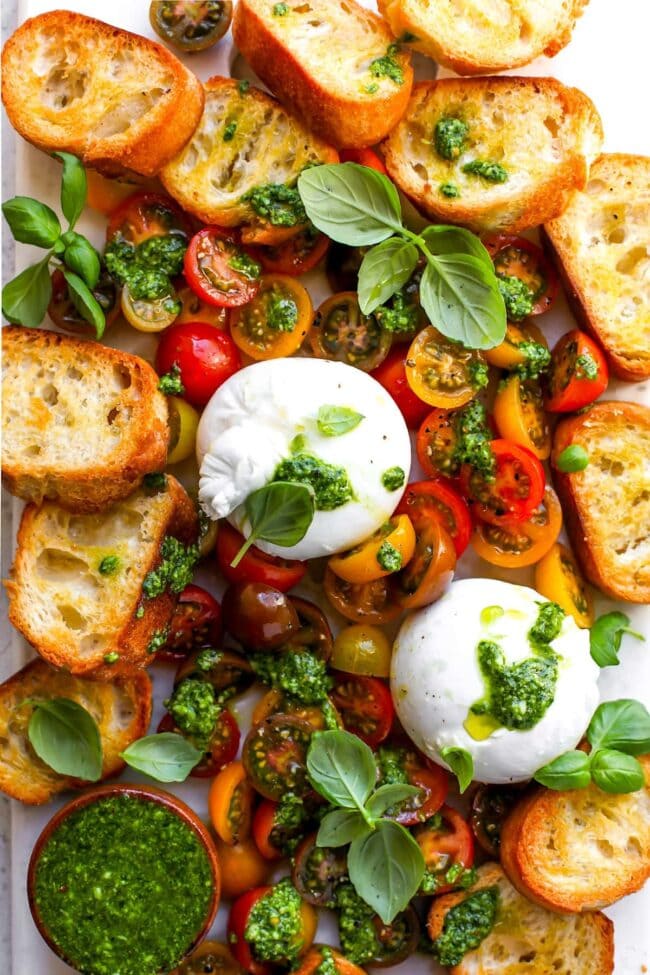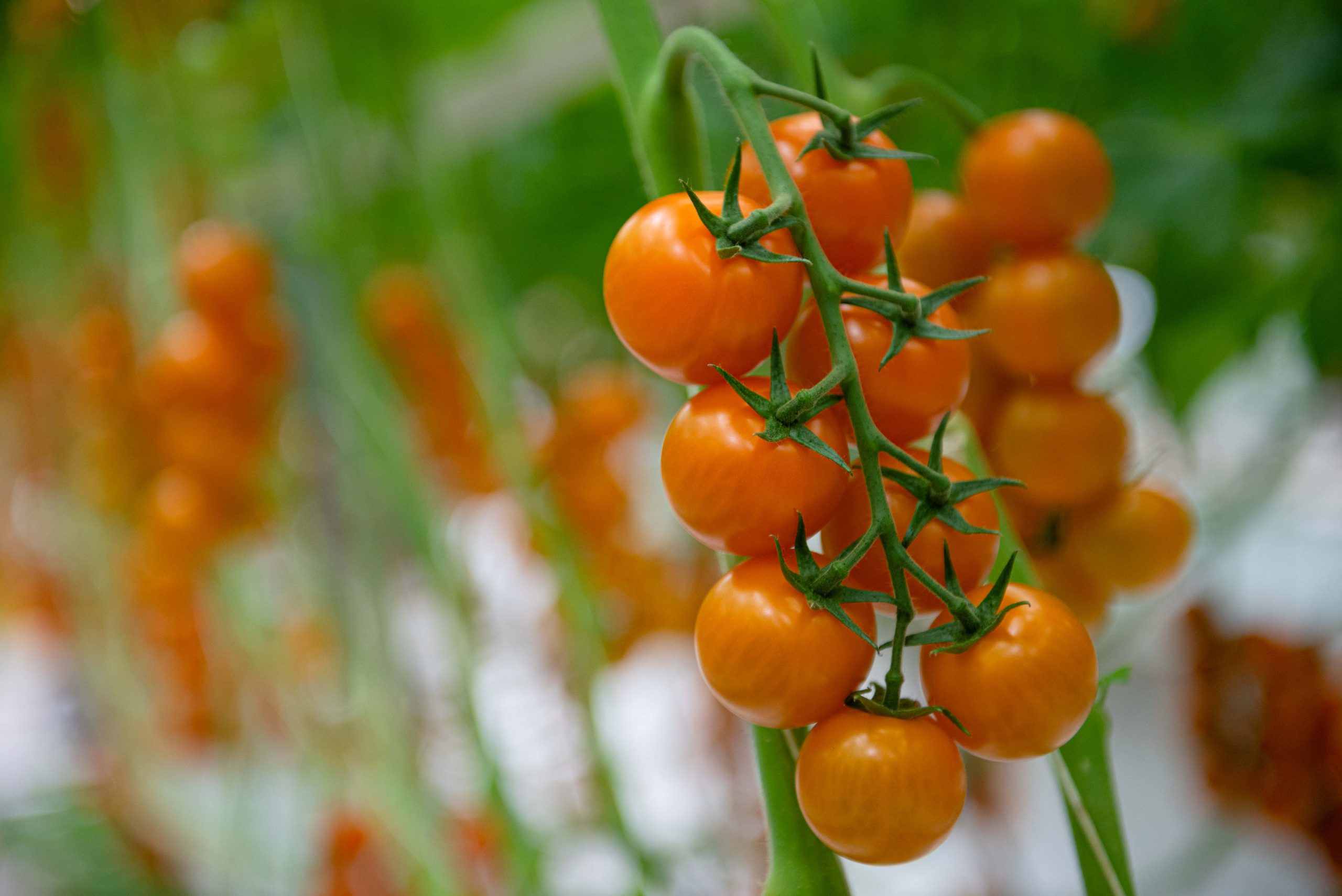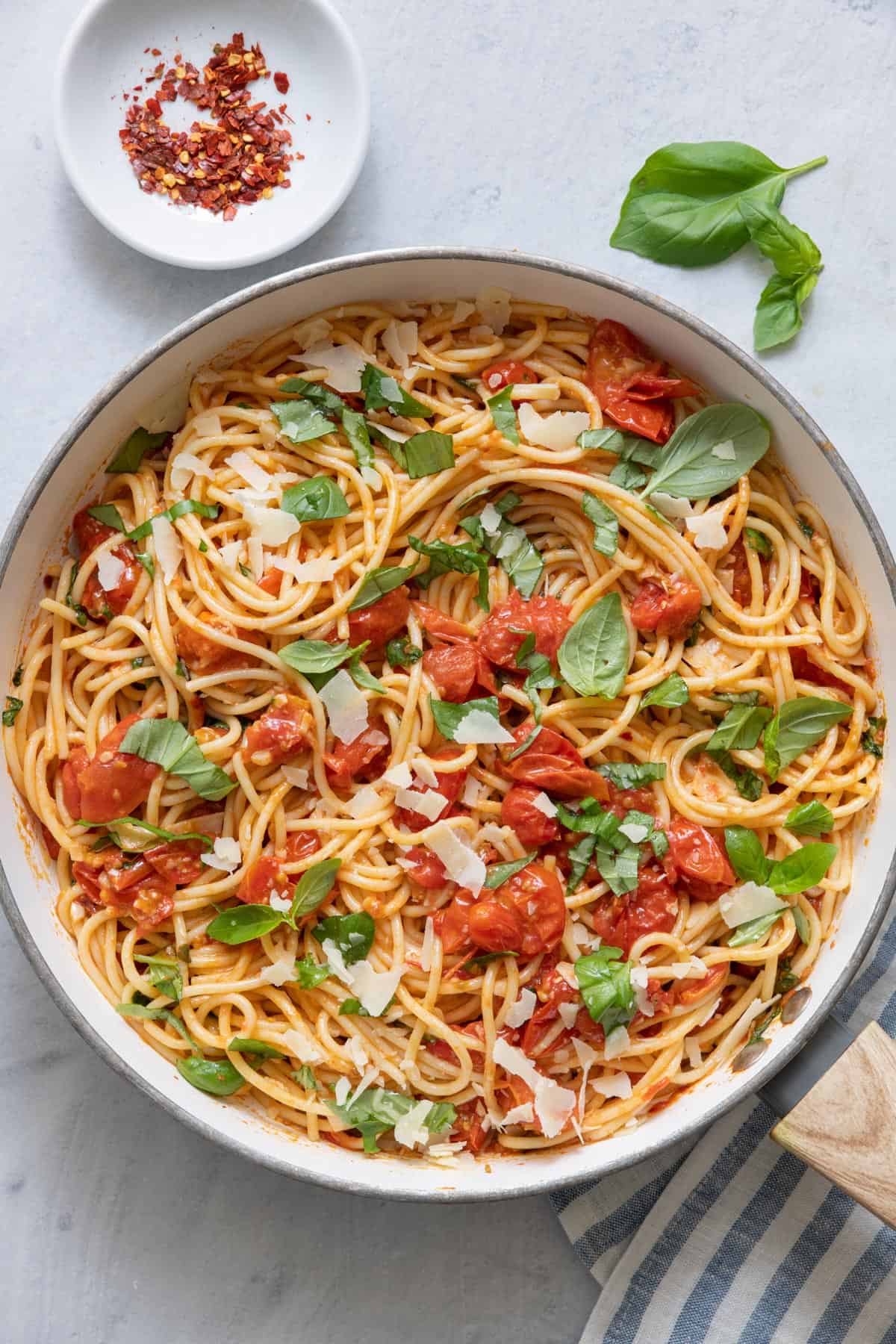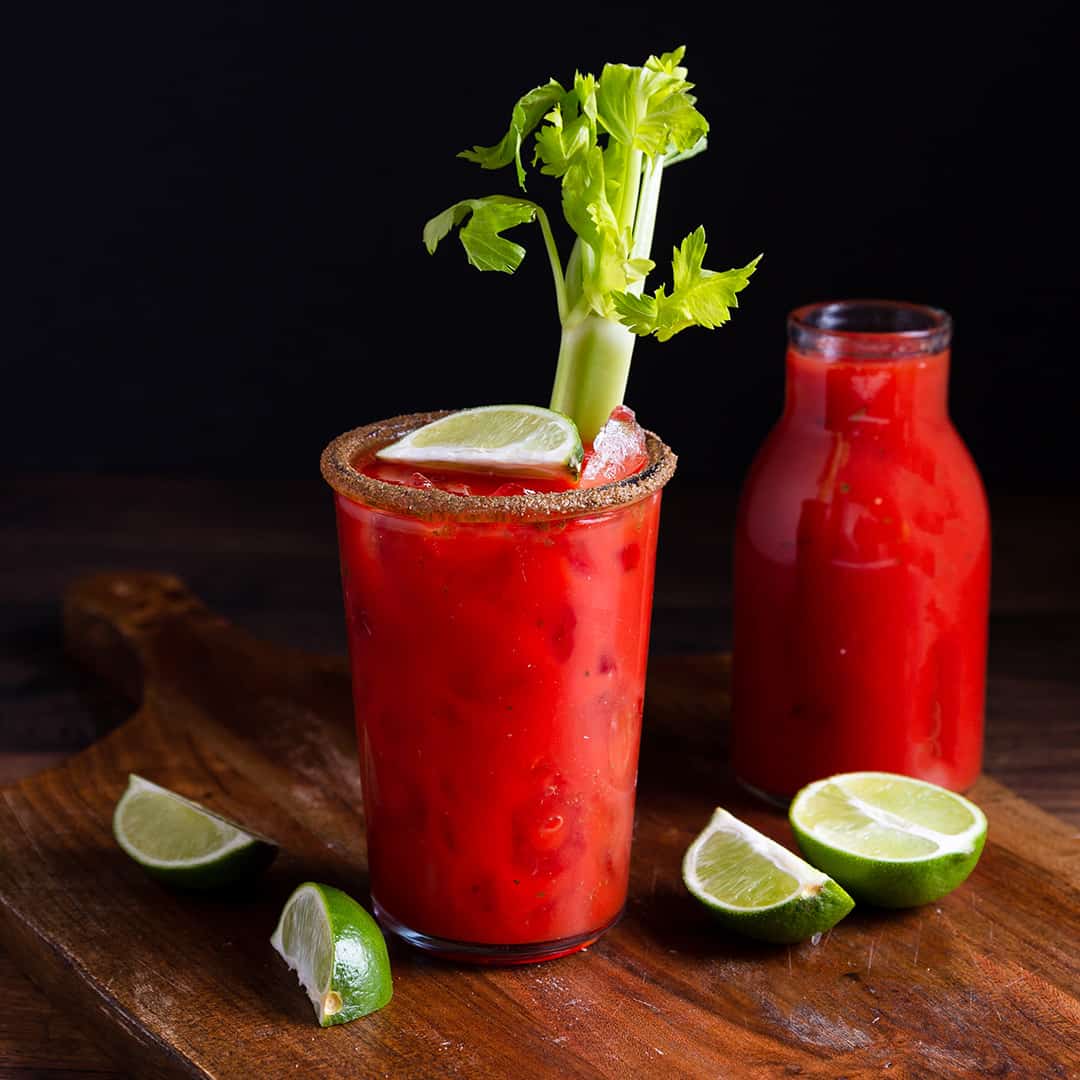A simple yet elegant starter, this Fresh Tomato & Burrata Salad with Basil Oil dish highlights the fresh, juicy flavours of tomatoes paired with creamy burrata and fragrant basil oil. Perfect for a light spring or summer appetiser!
Ingredients
For the Salad:
- 3 large ripe tomatoes (heirloom or vine-ripened), sliced
- 200g (7 oz) burrata cheese
- 10 cherry tomatoes, halved
- 1 tbsp extra virgin olive oil
- 1 tsp balsamic glaze
- Salt and black pepper, to taste
- 2 tbsp toasted pine nuts (optional, for crunch)
For the Basil Oil:
- 1 small bunch fresh basil (about 1 cup leaves)
- 3 tbsp extra virgin olive oil
- 1 clove garlic, minced
- ½ tsp lemon juice
- Pinch of salt
Method
- Make the Basil Oil:
- Blend basil leaves, olive oil, garlic, lemon juice, and salt in a small blender or food processor until smooth.
- Set aside or strain for a clearer oil.
- Assemble the Salad:
- Arrange the tomato slices and cherry tomatoes on a plate.
- Tear the burrata and place it in the centre.
- Drizzle with extra virgin olive oil and balsamic glaze.
- Garnish & Serve:
- Sprinkle with salt, black pepper, and toasted pine nuts if using.
- Spoon the basil oil over the top.
- Serve immediately with crusty bread.


